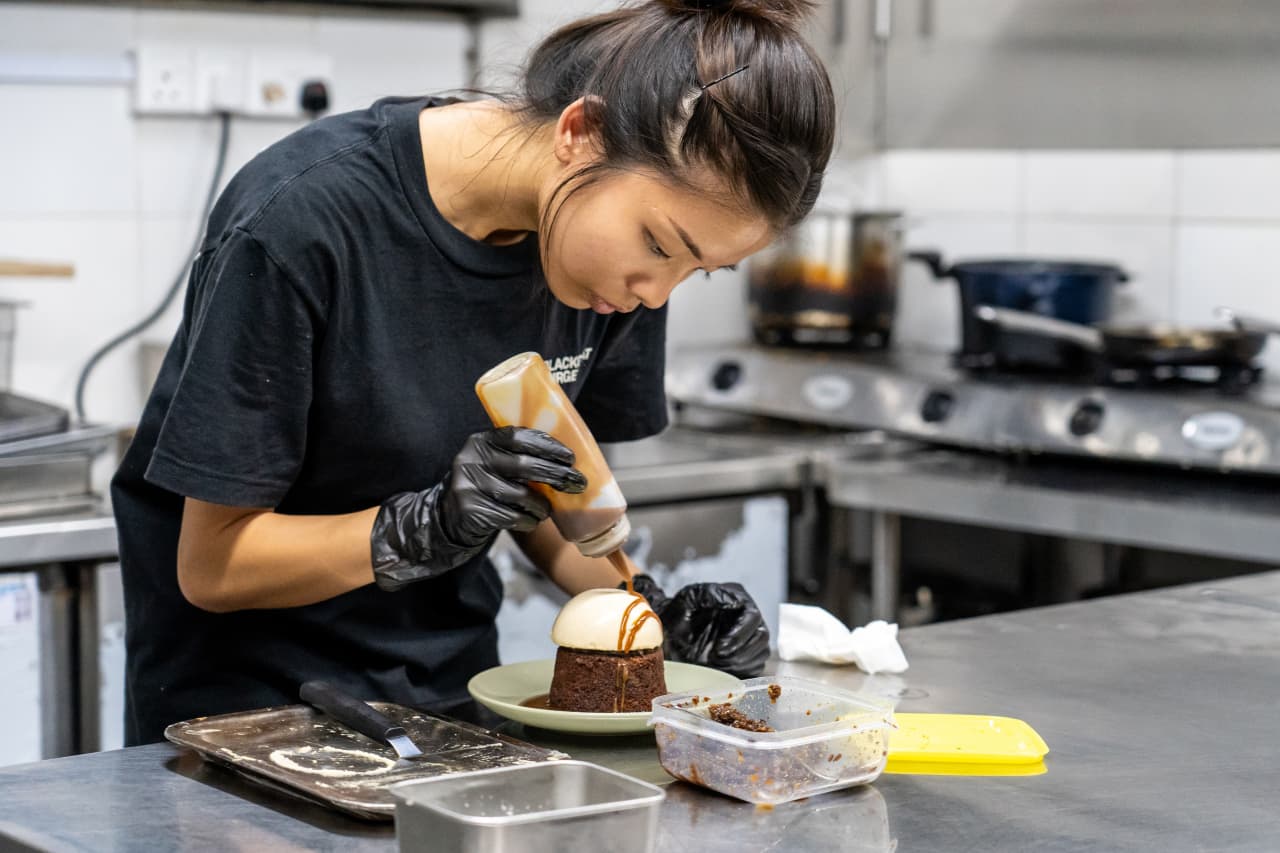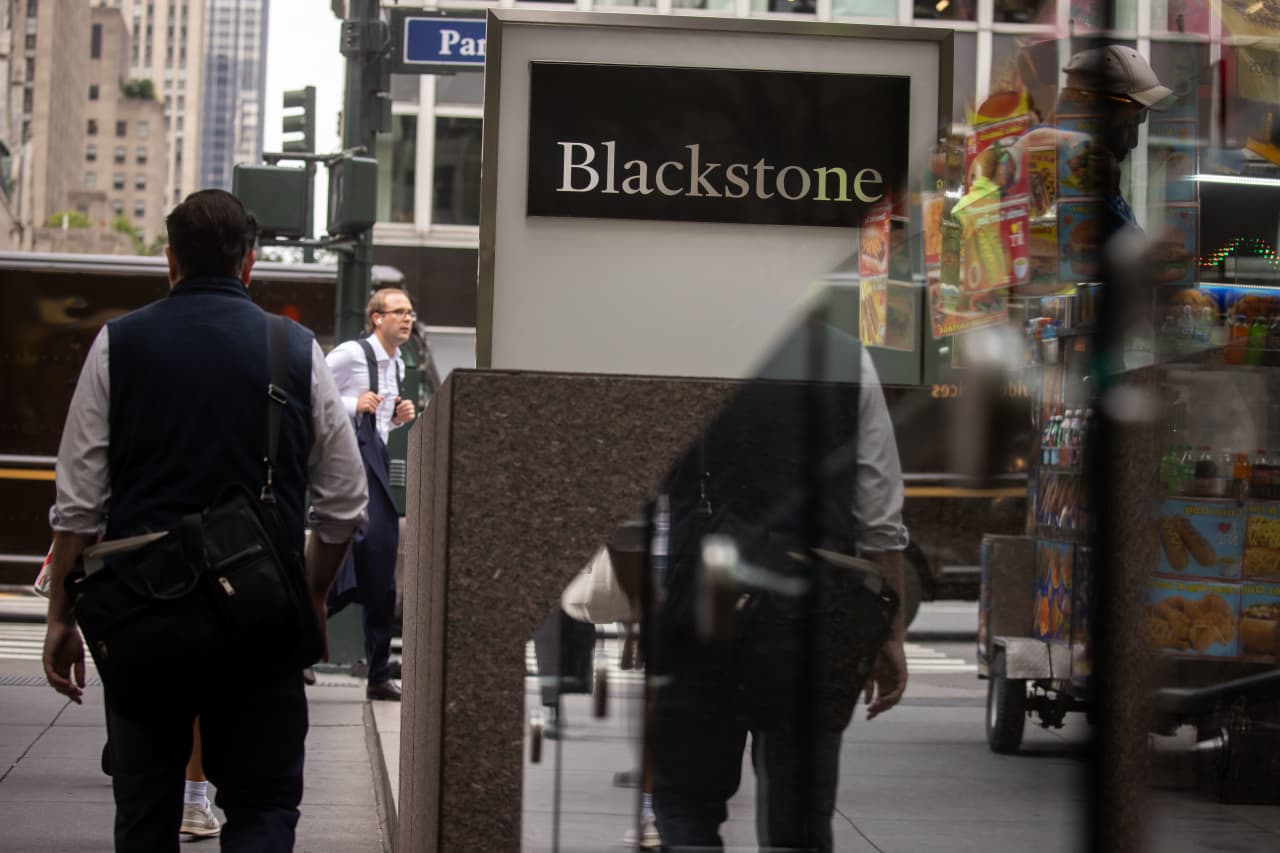Gucci Launches Sustainability Drive as European Fashion Regulation Looms
Makers of luxury goods, whose products are generally less damaging to the environment than fast fashion, are having to work to make their operations greener
Italian luxury brand Gucci is set to launch a hub in Tuscany promoting more durable and less wasteful fashion, as it joins efforts by the sector to meet comingEuropean regulations requiring companies to limit their impact on the environment.
The so-called circular hub will be a research-and-development centre to study ways to improve circularity, including through better durability and recyclability of products, as well as minimising waste and pollution from production to end of life. It will boost transformation in the Italian fashion industry’s production models, said Gucci in a joint release with French parent Kering.
Kering said the hub should promote the use of fewer natural resources and reduce greenhouse-gas emissions. While it didn’t detail how much it expects the hub to benefit the environment, the company did say it would cut the emissions from managing waste generated by Gucci’s leather-goods production by up to 60%.
Kering expects the hub to act as a forerunner for new models that it anticipates will be made obligatory by European regulations in the coming years. Last year, the European Union set out a plan to reduce the environmental damage of the apparel industry, which contributes as much as 8% of total greenhouse-gas emissions, according to United Nations estimates.
All makers of clothes and accessories would be subject to the new measures, even if the higher quality of luxury products and the brands’ typically more local and integrated supply chains tend to make them less environmentally damaging than the products manufactured by fast-fashion companies.
Clothing should be “long-lived and recyclable, and to a great extent made of recycled fibres,” the EU said in its proposed plan. It said labelling should make it easier for consumers to gauge the impact of what they buy.
Legislation in the EU will be formulated to enforce the new measures over the coming years, but some countries are moving ahead on their own. France has introduced a law obliging clothing producers and retailers in France to make clear to consumers the environmental impact of their products, including the amount of recycled material, the use of renewable energy in their production and their recyclability. The regulation applies to larger companies that had annual revenue above €50 million, equivalent to roughly $53 million, as of the beginning of this year and will be applied to smaller players from next year.
Companies are also working to comply with potential supply-chain regulations that could require larger firms operating in the EU to identify, prevent and remedy risks to human rights and the environment in their supply chains, such as minimum age requirements, worker safety, pollution and biodiversity loss.
Some fashion and consumer-goods companies have turned to new technology to help gather data on their supply chains and track material, though transparency remains tough to achieve in many cases. But luxury-goods companies such as Kering have an advantage over brands that sell to more general consumers, analysts at financial services company Jefferies said in a research note this week.
“Luxury brands generally have strong and transparent supply chains and an opportunity to better communicate sourcing quality,” they said.
On the other hand, high-end brands also come under more scrutiny, said Luca Solca, a luxury-goods analyst at brokerage Bernstein.
“Luxury brands have the burden to stand for our better selves, as they embody people’s aspirations and ideals,” Mr. Solca said. “In this respect it is on them to stand up to scrutiny when it comes to respecting the environment and society.”
Waste is a particularly tricky proposition for luxury brands, which have traditionally incinerated unsold stock to avoid discounting their products or diluting their brand image. The EU’s plan envisages requiring retailers to disclose how they deal with unsold textiles and even contemplates a possible ban on destroying unsold or returned clothes.
That would pose a problem for brands that don’t recycle or resell much of their leftover stock. In 2018, U.K. luxury fashion house Burberry said it would stop burning unsold inventory amid pressure from environmental groups, but some peers continue the practice.
“Product destruction can cause consumer backlash if reported in the press, [while] off-price sales are detrimental to brand equity,” Jefferies said. “Thus recycling is the preferable option, yet is an additional cost.”
However, some companies are starting to see the durable nature of luxury products as a life-cycle management opportunity. Kering-owned fashion house Bottega Veneta recently introduced a lifetime warranty on its handbags and the wider industry is increasingly open to allowing resale via secondhand luxury platforms.
Gucci’s circularity hub in Tuscany will involve all Kering facilities in the region, including Gucci’s production sites, raw materials suppliers and finished product producers. The hub’s activities will later be extended to Kering’s other brands, before opening to the wider fashion sector.
“The fashion industry needs to accelerate and launch serious actions to catalyse deep change, rethinking the way we produce and use resources as well,” Kering Chief Sustainability Officer Marie-Claire Daveu said.
 Copyright 2020, Dow Jones & Company, Inc. All Rights Reserved Worldwide. LEARN MORE
Copyright 2020, Dow Jones & Company, Inc. All Rights Reserved Worldwide. LEARN MORE
This stylish family home combines a classic palette and finishes with a flexible floorplan
Just 55 minutes from Sydney, make this your creative getaway located in the majestic Hawkesbury region.
No trip to Singapore is complete without a meal (or 12) at its hawker centres, where stalls sell multicultural dishes from generations-old recipes. But rising costs and demographic change are threatening the beloved tradition.
In Singapore, it’s not unusual for total strangers to ask, “Have you eaten yet?” A greeting akin to “Good morning,” it invariably leads to follow-up questions. What did you eat? Where did you eat it? Was it good? Greeters reserve the right to judge your responses and offer advice, solicited or otherwise, on where you should eat next.
Locals will often joke that gastronomic opinions can make (and break) relationships and that eating is a national pastime. And why wouldn’t it be? In a nexus of colliding cultures—a place where Malays, Indians, Chinese and Europeans have brushed shoulders and shared meals for centuries—the mix of flavours coming out of kitchens in this country is enough to make you believe in world peace.
While Michelin stars spangle Singapore’s restaurant scene , to truly understand the city’s relationship with food, you have to venture to the hawker centres. A core aspect of daily life, hawker centres sprang up in numbers during the 1970s, built by authorities looking to sanitise and formalise the city’s street-food scene. Today, 121 government-run hawker centres feature food stalls that specialise in dishes from the country’s various ethnic groups. In one of the world’s most expensive cities, hawker dishes are shockingly cheap: A full meal can cost as little as $3.
Over the course of many visits to Singapore, I’ve fallen in love with these places—and with the scavenger hunts to find meals I’ll never forget: delicate bowls of laksa noodle soup, where brisk lashes of heat interrupt addictive swirls of umami; impossibly flaky roti prata dipped in curry; the beautiful simplicity of an immaculately roasted duck leg. In a futuristic and at times sterile city, hawker centres throw back to the past and offer a rare glimpse of something human in scale. To an outsider like me, sitting at a table amid the din of the lunch-hour rush can feel like glimpsing the city’s soul through all the concrete and glitz.
So I’ve been alarmed in recent years to hear about the supposed demise of hawker centres. Would-be hawkers have to bid for stalls from the government, and rents are climbing . An upwardly mobile generation doesn’t want to take over from their parents. On a recent trip to Singapore, I enlisted my brother, who lives there, and as we ate our way across the city, we searched for signs of life—and hopefully a peek into what the future holds.
At Amoy Street Food Centre, near the central business district, 32-year-old Kai Jin Thng has done the math. To turn a profit at his stall, Jin’s Noodle , he says, he has to churn out at least 150 $4 bowls of kolo mee , a Malaysian dish featuring savoury pork over a bed of springy noodles, in 120 minutes of lunch service. With his sister as sous-chef, he slings the bowls with frenetic focus.
Thng dropped out of school as a teenager to work in his father’s stall selling wonton mee , a staple noodle dish, and is quick to say no when I ask if he wants his daughter to take over the stall one day.
“The tradition is fading and I believe that in the next 10 or 15 years, it’s only going to get worse,” Thng said. “The new generation prefers to put on their tie and their white collar—nobody really wants to get their hands dirty.”
In 2020, the National Environment Agency , which oversees hawker centres, put the median age of hawkers at 60. When I did encounter younger people like Thng in the trade, I found they persevered out of stubbornness, a desire to innovate on a deep-seated tradition—or some combination of both.
Later that afternoon, looking for a momentary reprieve from Singapore’s crushing humidity, we ducked into Market Street Hawker Centre and bought juice made from fresh calamansi, a small citrus fruit.
Jamilah Beevi, 29, was working the shop with her father, who, at 64, has been a hawker since he was 12. “I originally stepped in out of filial duty,” she said. “But I find it to be really fulfilling work…I see it as a generational shop, so I don’t want to let that die.” When I asked her father when he’d retire, he confidently said he’d hang up his apron next year. “He’s been saying that for many years,” Beevi said, laughing.
More than one Singaporean told me that to truly appreciate what’s at stake in the hawker tradition’s threatened collapse, I’d need to leave the neighbourhoods where most tourists spend their time, and venture to the Heartland, the residential communities outside the central business district. There, hawker centres, often combined with markets, are strategically located near dense housing developments, where they cater to the 77% of Singaporeans who live in government-subsidised apartments.
We ate laksa from a stall at Ghim Moh Market and Food Centre, where families enjoyed their Sunday. At Redhill Food Centre, a similar chorus of chattering voices and clattering cutlery filled the space, as diners lined up for prawn noodles and chicken rice. Near our table, a couple hungrily unwrapped a package of durian, a coveted fruit banned from public transportation and some hotels for its strong aroma. It all seemed like business as usual.
Then we went to Blackgoat . Tucked in a corner of the Jalan Batu housing development, Blackgoat doesn’t look like an average hawker operation. An unusually large staff of six swirled around a stall where Fikri Amin Bin Rohaimi, 24, presided over a fiery grill and a seriously ambitious menu. A veteran of the three-Michelin-star Zén , Rohaimi started selling burgers from his apartment kitchen in 2019, before opening a hawker stall last year. We ordered everything on the menu and enjoyed a feast that would astound had it come out of a fully equipped restaurant kitchen; that it was all made in a 130-square-foot space seemed miraculous.
Mussels swam in a mushroom broth, spiked with Thai basil and chives. Huge, tender tiger prawns were grilled to perfection and smothered in toasted garlic and olive oil. Lamb was coated in a whisper of Sichuan peppercorns; Wagyu beef, in a homemade makrut-lime sauce. Then Ethel Yam, Blackgoat’s pastry chef prepared a date pudding with a mushroom semifreddo and a panna cotta drizzled in chamomile syrup. A group of elderly residents from the nearby towers watched, while sipping tiny glasses of Tiger beer.
Since opening his stall, Rohaimi told me, he’s seen his food referred to as “restaurant-level hawker food,” a categorisation he rejects, feeling it discounts what’s possible at a hawker centre. “If you eat hawker food, you know that it can often be much better than anything at a restaurant.”
He wants to open a restaurant eventually—or, leveraging his in-progress biomedical engineering degree, a food lab. But he sees the modern hawker centre not just as a steppingstone, but a place to experiment. “Because you only have to manage so many things, unlike at a restaurant, a hawker stall right now gives us a kind of limitlessness to try new things,” he said.
Using high-grade Australian beef and employing a whole staff, Rohaimi must charge more than typical hawker stalls, though his food, around $12 per 100 grams of steak, still costs far less than high-end restaurant fare. He’s found that people will pay for quality, he says, even if he first has to convince them to try the food.
At Yishun Park Hawker Centre (now temporarily closed for renovations), Nurl Asyraffie, 33, has encountered a similar dynamic since he started Kerabu by Arang , a stall specialising in “modern Malay food.” The day we came, he was selling ayam percik , a grilled chicken leg smothered in a bewitching turmeric-based marinade. As we ate, a hawker from another stall came over to inquire how much we’d paid. When we said around $10 a plate, she looked skeptical: “At least it’s a lot of food.”
Asyraffie, who opened the stall after a spell in private dining and at big-name restaurants in the region, says he’s used to dubious reactions. “I think the way you get people’s trust is you need to deliver,” he said. “Singapore is a melting pot; we’re used to trying new things, and we will pay for food we think is worth it.” He says a lot of the same older “uncles” who gawked at his prices, are now regulars. “New hawkers like me can fill a gap in the market, slightly higher than your chicken rice, but lower than a restaurant.”
But economics is only half the battle for a new generation of hawkers, says Seng Wun Song, a 64-year-old, semiretired economist who delves into the inner workings of Singapore’s food-and-beverage industry as a hobby. He thinks locals and tourists who come to hawker centers to look for “authentic” Singaporean food need to rethink what that amorphous catchall word really means. What people consider “heritage food,” he explains, is a mix of Malay, Chinese, Indian and European dishes that emerged from the country’s founding. “But Singapore is a trading hub where people come and go, and heritage moves and changes. Hawker food isn’t dying; it’s evolving so that it doesn’t die.”
This stylish family home combines a classic palette and finishes with a flexible floorplan
Just 55 minutes from Sydney, make this your creative getaway located in the majestic Hawkesbury region.






















